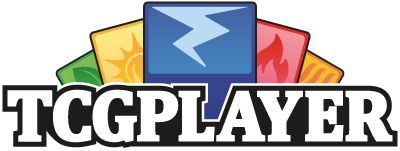Opening Sealed Product
Collin Stiles
We have a lot of blog posts focused around selling products because that is the core of what TCGplayer is about. However, that’s just one side of the coin; you need to acquire those products before you can sell them. There are plenty of ways out there to acquire new cards to sell. You can utilize buylists or buy collections, but they both have a common trait: inconsistency. Utilizing either of those methods puts you in a situation where you are reliant on other people already owning the cards and wanting to sell them. This can be particularly difficult when a new set is coming out, and you want to get in on those release day prices. This leaves you with another option: opening sealed product.
Opening sealed product isn’t without risk. You are opening a product that is designed to contain random contents. However, provided you open enough of a specific set, you can make reasonable assumptions as to the monetary value of the cards, based on current pricing data. Everything comes down to having a large enough sample size to make these assumptions and estimates.
Take one of the newest Pokémon sets, Darkness Ablaze, for example. In the following table, you can see the estimated hit rates for different rarities.

*Note: these are not official numbers. They are numbers extracted from real life data.
Let’s look at the hit rate of an Ultra Rare - Pokémon (Full Art Card). You can expect to open one in every 37 packs, or roughly, one per box (36 packs). However, If you look at Holo Rare V’s, they appear once in every 8 packs, which means you can expect approximately 4 per box. You can then extrapolate this information over the amount of product you are going to order. For each rarity you will want to calculate the average price then multiply that by the number of each rarity expected. Add up those figures, and if the total expected exceeds the amount spent, you likely have a good purchase on your hands.
You’ll want to make sure that the costs you incur in acquiring the product makes sense for what you reasonably expect to get out of it. This often means purchasing from a distributor. Many distributors are happy to work with online retailers for Pokémon, but you will need to have a brick and mortar location in order to purchase Magic: the Gathering or Yu-Gi-Oh!.
Once you have identified the product to buy and you have it on hand, it’s time to get to work cracking packs and getting the product listed. As outlined here, we recommend sorting your inventory by condition, set, then by card name. As you’re opening up your product, sort as you go. Using a tray like this, you can easily sort cards based on the first letter of the name as you open. Once the product is entirely opened, finish alphabetizing each letter group. When opening sealed product, you can assume most cards will be Near Mint. There are exceptions however, so be sure to keep an eye out.
Once your cards are opened and sorted, we recommend utilizing a .csv import to update your inventory. If you opened enough product to make an accurate estimate of the value, you likely opened each card in the set at least once. This will make it very easy to input quantities into the .csv file and get it onto your TCGplayer account.
Opening sealed product isn’t an exact science, but by understanding how much you need to open to obtain a set’s expected value, and getting it at the right price, you can prepare yourself for success, especially when a set is first coming out!
If you want to dive further into this topic, schedule a meeting with one of our Customer Success Managers here!
